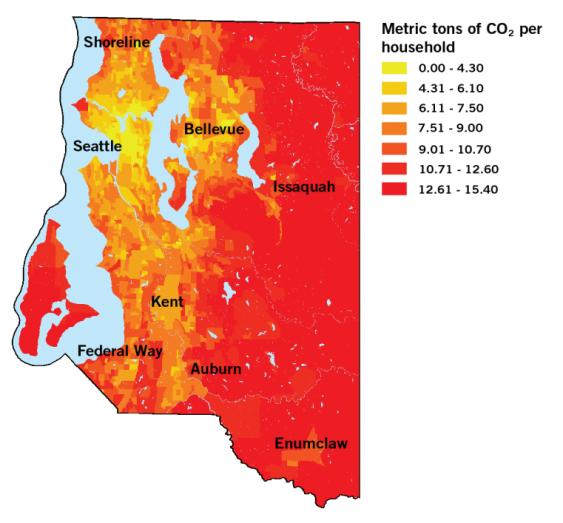For years, local governments have used Transfer of Development Rights (TDR) programs to help channel urban growth away from farmland, forests, and open space. But new evidence suggests that, when used carefully, TDR programs can also help local governments achieve meaningful reductions in local greenhouse gas emissions.
Sightline’s analysis of King County’s TDR program and a variety of public data sources suggests that a single TDR exchange could reduce climate-warming carbon dioxide emissions by about 270 metric tons over 30 years, compared with development patterns that might otherwise occur. This is a significant reduction, representing half of the average emissions from one US resident for the same period.
However, not all TDR exchanges yield climate benefits. TDRs achieve their greatest potential for reducing GHGs when a rural or exurban landowner sells the right to build a single family home, and a developer in the urban core purchases the right to increase floor space for multi-unit housing. But when TDR exchanges simply swap the location of single family residences from one low-density exurb to another, they may do little or nothing to reduce GHG emissions. Each TDR transaction is unique, and only some of them show promise for reducing climate-warming emissions.
Transfer of Development Rights






